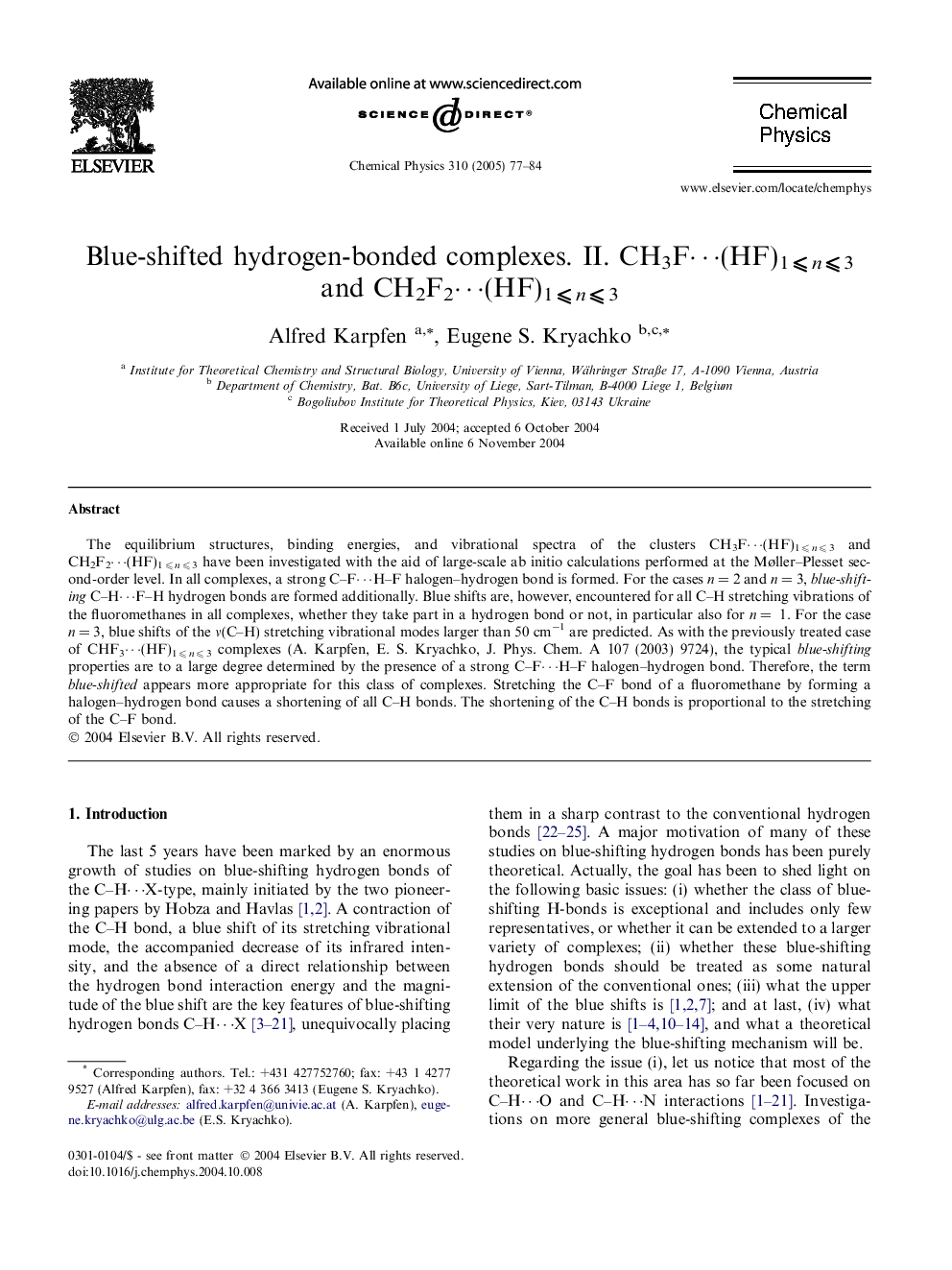| Article ID | Journal | Published Year | Pages | File Type |
|---|---|---|---|---|
| 9575446 | Chemical Physics | 2005 | 8 Pages |
Abstract
The equilibrium structures, binding energies, and vibrational spectra of the clusters CH3Fâ¯(HF)1 ⩽ n ⩽ 3 and CH2F2â¯(HF)1 ⩽ n ⩽ 3 have been investigated with the aid of large-scale ab initio calculations performed at the Møller-Plesset second-order level. In all complexes, a strong C-Fâ¯H-F halogen-hydrogen bond is formed. For the cases n = 2 and n = 3, blue-shifting C-Hâ¯F-H hydrogen bonds are formed additionally. Blue shifts are, however, encountered for all C-H stretching vibrations of the fluoromethanes in all complexes, whether they take part in a hydrogen bond or not, in particular also for n = 1. For the case n = 3, blue shifts of the ν(C-H) stretching vibrational modes larger than 50 cmâ1 are predicted. As with the previously treated case of CHF3â¯(HF)1 ⩽ n ⩽ 3 complexes (A. Karpfen, E. S. Kryachko, J. Phys. Chem. A 107 (2003) 9724), the typical blue-shifting properties are to a large degree determined by the presence of a strong C-Fâ¯H-F halogen-hydrogen bond. Therefore, the term blue-shifted appears more appropriate for this class of complexes. Stretching the C-F bond of a fluoromethane by forming a halogen-hydrogen bond causes a shortening of all C-H bonds. The shortening of the C-H bonds is proportional to the stretching of the C-F bond.
Related Topics
Physical Sciences and Engineering
Chemistry
Physical and Theoretical Chemistry
Authors
Alfred Karpfen, Eugene S. Kryachko,
